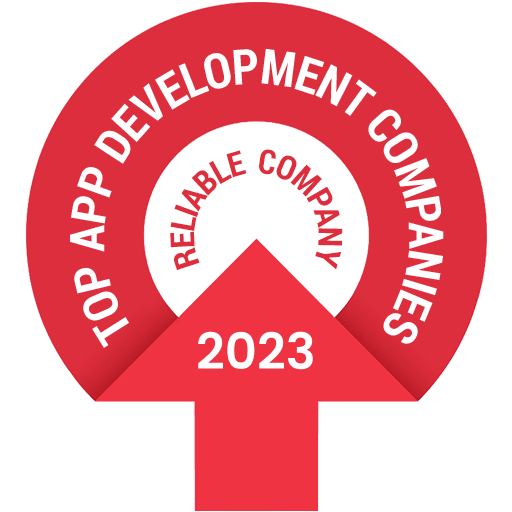
10 Key Elements of a Powerful Sales Tech Stack
- By Katy Flatt
- 15-05-2024
- Technology
A dynamic sales tech stack is an essential part of business operations. By using the right combination of tools, software, and technology, companies can stay ahead of the curve and continue to drive sales success and growth as the industry landscape changes.
Tech stacks look differently depending on your business needs and goals and can include as many or as few tools to help you reach your objective.
In this article, we’ll take a look at key elements of a robust and modern sales tech stack and how sales leaders can streamline workflows, encourage team collaboration, and increase revenue growth.
Defining the Sales Tech Stack
A sales tech stack is the compilation of software and technology used by sales teams to organize and manage their sales processes.
The most effective tech stacks include a variety of applications and tools to help streamline the sales cycle and process, from customer acquisition to data collection and internal team communications.
How to Start Building a Powerful Tech Stack for Sales
With so many software and platforms available, it can be hard to discern exactly which tools are necessary.
Not every piece of software will serve you and support your business, but the ones you choose should fulfill specific needs—such as tracking, automation, and communication—to create a well-rounded tech stack.
So to start, think about your business goals and how you want your sales tech stack to support those goals. Which tools are currently working for you, and what areas need improvement?
Whether you’re starting from scratch or your current sales tech stack needs a refresh, prioritize your business goals, then refine those goals according to your current sales campaign.
After that, it’s all about continual improvement. As your business grows and the market changes, sales teams and leaders should audit their tech stacks regularly to align with business objectives and maintain their competitive advantage.
Every software and strategy should be working together to streamline the efforts of the sales team throughout the sales cycle. What is the great thing about building your own sales tech stack? You get to customize it to your business needs at any moment in time.
10 Elements to Make Your Sales Stack Thrive
With your goals clarified, here are ten types of tools and strategies to include in your tech stack to drive productivity, collaboration, and ultimately revenue.
Customer Relationship Management Software
For many sales teams, reliable customer relationship management (CRM) software is non-negotiable. A CRM is an essential tool used to manage relationships and interactions with customers and potential customers. In many ways, the CRM is the core of a sales tech stack. It acts as a hub to store, organize, and manage customer data.
Not all CRM software is made equally, though most platforms provide access to multiple tools and features that help optimize sales cycles:
- Collect prospective customer data
- Organize and manage leads at each phase of the sales funnel
- Track sales information and trends
- Analyze sales data
CRM platforms aren’t only used by the sales team, either. Utilizing a CRM between sales and marketing teams, for example, boosts cross-functional collaboration and allows both teams to access necessary information and data.
Additionally, CRM software helps facilitate communication between customers and potential customers. Tracking phone calls, emails, customer support requests, and general questions from various tools can be overwhelming. Instead of handling communication through multiple channels, CRM software offers one centralized platform for customer interactions and engagement.
Automation Tools
Most companies are familiar with common automation functions to perform repetitive tasks, like data entry or sending follow-up emails. Automating these types of repetitive tasks removes the potential for errors or mistakes that manual processes can lead to.
Thanks to automation, your sales team will experience a boost in productivity as sales representatives can work on higher-value tasks, such as nurturing leads through the sales funnel and closing deals.
Beyond that, automation tools specific to sales teams can help with processes like lead scoring and organization. As leads move through the sales funnel, automation tools can route leads to the appropriate sales representative and sales or marketing sequences to help prioritize the most promising leads.
Automation tools also allow sales teams to design specific workflows and procedures that align with best practices. There’s a higher level of accuracy, which then filters down to the interactions prospective clients have with your business. Positive customer experiences lead to trust and reinforce brand credibility, which can encourage potential customers to move through the sales funnel and lead to conversion.
Internal Communication Channels
Effective communication within your business must be a priority, especially when working cross-functionally and/or remotely.
In most cases, a single sales campaign typically involves multiple teams, project management, and leadership to collaborate with one another. Having open contact with different teams via asynchronous chat tools and even project management software ensures everyone’s goals align from the conception of the campaign and throughout the process.
Nowadays, with teams operating from various locations and time zones, communication is a vital element to help businesses run smoothly.
Some businesses run the risk of creating silos within their company due to the separation of departments. Team members who are unable to share information or data with others can hinder the momentum of projects and sales campaigns. If there isn’t a line of communication and transparency between teams, that could prevent the progress of the campaign.
Fostering an open line of communication across all levels of the organization can increase trust and encourage teams to work together.
Data Enrichment
Customer data is the bread and butter of any sales team. But what if you could make that data even better?
Data enrichment is a process that takes raw customer data and combines it with new information from third parties to create a clear and dynamic customer profile.
Third parties and external sources may include:
- Social media
- Public databases
- Third-party vendors
- Online studies and research
Data enrichment tools can also provide sales teams with enhanced lead scoring strategies to organize potential customers. In particular, high-value leads are more accurately segmented and directed to appropriate funnels based on enriched data such as company size, industry, and engagement or behavior with your business.
The benefit of incorporating data enrichment methods into your process is that it can reveal new insights about customers. The deeper your understanding of your target customers, the better equipped sales teams are to make data-driven decisions based on valuable insights and measured data.
Sales Tracking, Analytics, and Reporting
Tracking, analytics, and reporting contribute to a large piece of the sales pipeline puzzle, each with its own benefits.
Tracking sales activities gathers raw data necessary to improve the overall sales process. In order to optimize sales performance, the team needs data on certain activities, like customer interactions and movement through the sales pipeline.
By tracking each stage of the sales process, teams can pinpoint the general health of the pipeline and which areas fall short and need to be addressed.
Real-time data is invaluable and allows teams to spot trends in customer behavior and identify opportunities to convert leads into customers as they occur. Sales tracking also opens a window into the immediate challenges of the sales cycle that teams can address promptly and without delay.
Analytics and reporting tools take the information gathered from the tracking tools and provide sales teams with actionable insights. By analyzing key performance indicators (KPIs) like conversion rates and customer acquisition costs, sales leaders can adjust their sales strategy based on the data.
Sales Prospecting Tools
In sales, we often discuss moving leads through the sales funnel with the goal of converting them into paying customers. But where do the leads come from?
Sales prospecting tools are specifically designed to identify and engage with leads more effectively and usher them through the sales funnel.
These tools use data mining techniques, advanced analytics, and specific search filters to sift through databases that align with your ideal customer profile. Better yet, these tools are capable of identifying high-potential customers based on criteria like industry, company size, and buying behavior.
Additionally, sales prospecting tools gather insights about customer interests, their pain points, and recent buying activities. All of this combined data paints a clear picture of your ideal customer and helps sales teams tailor personalized messages to send to each customer.
Using sales prospecting tools offers an efficient method of generating leads, which streamlines the outreach process through a targeted approach. The results can ultimately lead to shorter sales cycles, more conversions, and increased revenue growth.
Application Integration
A necessary component of any sales tech stack is integrability.
Why is this important? To start, data sharing is one of the most efficient ways to improve workflows. This removes the need to manually transfer data from one software to another and reduces the chances of mistakes or incorrect information being input into the system.
Real-time data can also be synced across multiple platforms, enabling teams to make informed, timely decisions and improvements to current processes and sales campaigns. Plus, the more data that is shared between teams, the less likely it is that silos will be created between teams and departments.
Integration enables sales teams to work collaboratively and increases productivity. As more informed decisions are made, thanks to data sharing across multiple platforms, sales teams can improve the sales life cycle and the overall customer experience. So, when creating your own stack, be sure to consider how each element will work together.
Engagement and Outreach Tools
The reality of a sales campaign is that potential customers will typically experience multiple touchpoints (any engagement or interaction with your business) before converting into customers.
Touchpoints can range from automated interactions to real-time engagement, such as:
- Receiving emails or newsletters
- Phone calls with a sales representative
- Engaging through social media
- Scheduling a product demonstration
- Interacting with a chatbot on your website
Beyond using CRM software to engage with customers, some businesses may need to invest in sales-specific tools for various types of outreach. For example, social selling platforms allow sales teams to leverage existing social media platforms to research their targeted customers, share relevant content, and engage with potential customers.
In today’s consumer landscape, personalization and relatability go a long way. Video message platforms are another type of engagement tool to reach high-value customers. By creating personalized messages, sales teams add a human touch to their outreach methods, which can help build a positive, customer-first relationship with leads as they move through the sales funnel.
These tools should also provide performance insight to gauge the impact of your outreach efforts. Using a data-driven approach to customer engagement allows sales teams to improve communication methods and incorporate necessary resources that support customer loyalty and stronger relationships.
In order to thrive in modern business environments, companies must prioritize relationship-building with potential customers. Each touchpoint serves as a point of contact with a potential customer, and, as such, each interaction should facilitate a meaningful connection.
Documentation Software
Documentation is often overlooked in tech stacks, but it is an essential element to smooth business operations.
Documentation tools help create, organize, and manage all the necessary “paperwork” used throughout the sales process. These documents often include contracts, proposals, product information, presentations, and case studies.
Certain features may vary depending on the software, but most sales documentation tools include the ability to create and edit documents within the platform. Documentation sharing and distribution is another key feature that enables team members to collaborate on documents simultaneously. Version control and real-time editing ensure that everyone has access to updated information and support informed decision-making across all teams.
Some documentation software may also provide template libraries for convenience and additional branding capabilities. Sales representatives can create professional material that aligns with your company’s brand and includes personalized messages tailored to each potential customer.
Sales Enablement Tools
While most software and applications in a sales tech stack are geared toward the sales pipeline and customers, sales enablement tools are designed to empower sales representatives in their roles. Enablement tools are used to provide resources and knowledge that assist sales team members.
Sales enablement tools can help provide training, coaching, and mentorship to support sales representatives through learning and development opportunities, which may include access to:
- Sales guidelines and playbooks
- Knowledge banks and resource libraries
- Best practices and strategies for customer engagement
- Video tutorials
- Interactive training modules
- Mentorship programs
The goal is to prepare sales representatives with knowledge, skills, and experience that enable them to fulfill their duties with confidence.
Now You’re Ready to Design Your Sales Tech Stack!
A robust sales tech stack combines the necessary software and technologies needed to support the sales team and the sales process from end to end. From lead prospecting tools to internal communication channels and enablement, a powerful tech stack can give your business the competitive edge it needs.
Which sales stack elements will you combine to support the goal of the sales pipeline, boost collaboration and productivity, and ultimately grow revenue?
Recent blog

The Psychology Behind Rebranding (Expert Guide 2025)
Trends | 16-09-2025
The Role of Mobile Apps in Modern School Management Systems
Mobile Apps | 15-09-2025.jpg)




